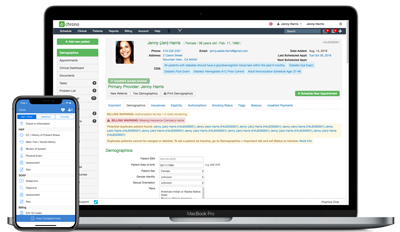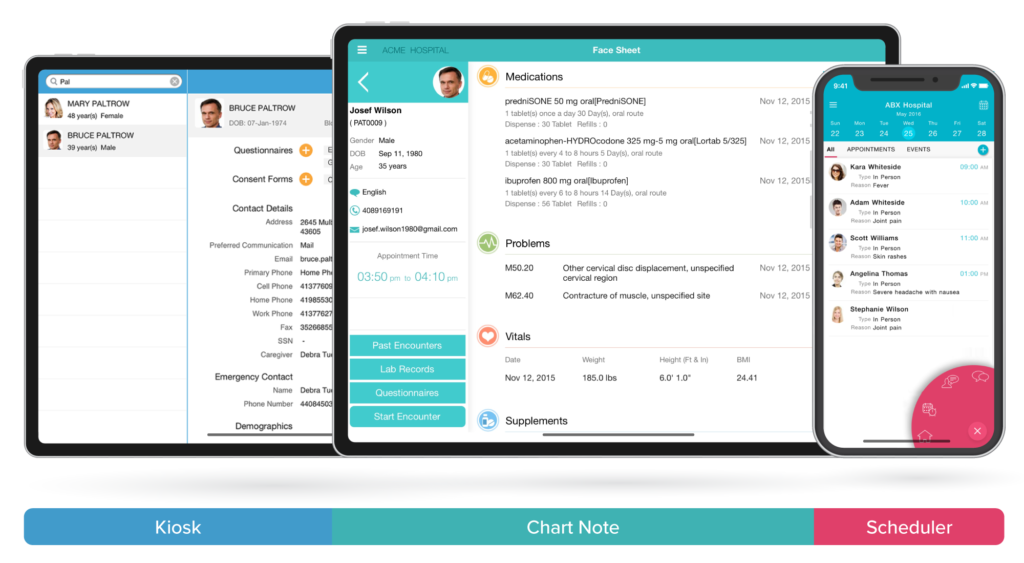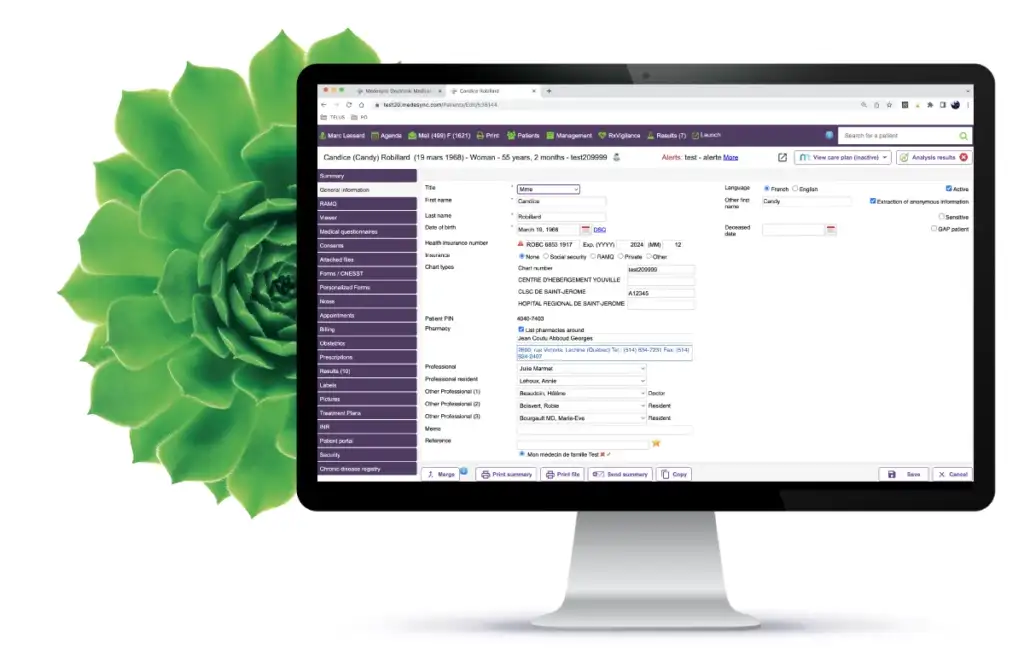Electronic Health Records (EHRS) including custom-built and cloud based (well-known and lesser known EHR systems) have revolutionized healthcare by digitizing patient data, streamlining workflows and increasing care coordination. While industries such as EPIC, Cerner, and Allscripts dominate the market, different types of low-term EHR systems are quietly making waves, especially small for small practices and niche specialties. These platforms often provide strength, adaptation and innovative features that meet the specific requirements ignored by large vendors. In this blog, we dive into 11 less famous EHRs highlighting their unique offerings, discovery of strength, and why they deserve to be seen closely as 19 March 2025.
Table of Contents
1. Drchrono: The Mobile-First Innovator

Mobile-First Innovator Drchrono, established in 2009, led Mobile EHRS with its iPad app launch in 2011. Located in Sunnyvale, California, it makes the cloud-based platform focus on dynamics and the practicing to midsize the practices. It integrates EHR, practice management, telehland and billing into a spontaneous ecosystem. The major features include optimized templates, e-cycybing (including controlled substances), and a patient portal, called onpatients. Drchrono’s claim for fame is its apple mobility partner status and is a frequent ranking in the form of #1 mobile EHR of Black Book for almost a decade. While it processes billions in annual medical claims, its global recognition is limited compared to enterprise solutions, making it a hidden gem for technology-lover providers.
2. Practice Fusion: The Freemium Contender
Practice Fusion offers a cloud-based EHR with a freemium model that once disrupted the market by providing free access to basic features. Aimed at small practices, it includes charting, e-prescribing, and scheduling tools. Acquired by Allscripts in 2018, its focus shifted, reducing its standalone visibility. Despite this, it retains a loyal user base for its simplicity and affordability. Its lack of aggressive international marketing keeps it under the radar, but it’s a solid choice for budget-conscious providers.
3. CharmHealth: Flexible and Affordable

CharmHealth (Charm EHR) is a web-based, cloud EHR designed for small to medium practices. It emphasizes flexibility with customizable templates, telehealth integration, and billing features. While HIPAA-compliant and ONC-certified, its U.S.-centric marketing limits its global footprint. CharmHealth stands out for its collaboration-driven approach, enabling providers to tailor workflows without the complexity of larger systems. It’s a practical option for practices seeking cost-effective, adaptable solutions.
4. OpenEMR: The Open-Source Champion
OpenEMR is a free, open-source EHR supported by a global developer community. It’s highly customizable, offering patient records, scheduling, and billing in multiple languages. Its lack of commercial backing means it relies on user adoption rather than marketing, keeping it less renowned. OpenEMR suits tech-savvy practices willing to invest time in setup and maintenance, offering unparalleled freedom at no cost.
5. NueMD: The Understated Workhorse
NueMD, now part of AdvancedMD’s portfolio, targets small to midsize practices with a cloud-based EHR and practice management solution. It provides billing, scheduling, and e-prescribing, but its visibility is overshadowed by AdvancedMD’s flagship product. NueMD’s straightforward design and integration capabilities make it a reliable, if unheralded, choice for practices prioritizing efficiency over fanfare.
6. Kareo (Tebra): Rebranded and Rising

Kareo, recently rebranded as Tebra after merging with PatientPop, serves small practices with a cloud-based platform integrating EHR, billing, and patient engagement. Its telehealth and customizable workflows are highlights, yet its U.S.-focused approach limits global recognition. Tebra’s evolution signals ambition, but it remains less known than enterprise competitors, appealing to practices seeking an all-in-one solution.
7. Elation Health: Primary Care’s Ally
Elation Health focuses on primary care with a clinical-first, cloud-based EHR. Features like AI-powered note dictation, telehealth, and patient communication tools streamline workflows. Its niche focus and lack of broad specialty coverage keep it out of the mainstream spotlight. For primary care providers, Elation offers a user-friendly, patient-centric alternative to bulkier systems.
8. Medesync: Canada’s Quiet Contributor
Medesync is a cloud-based EHR primarily serving Canadian providers, with some international use. Its simplicity- scheduling, records, and billing in an intuitive interface, makes it accessible, but its limited geographic reach curbs its fame. Medesync is ideal for practices valuing ease of use over extensive features, particularly in Canada’s healthcare landscape.

9. Nosh ChartingSystem: Open-Source Simplicity
Nosh ChartingSystem is another open-source, cloud-based EHR aimed at small practices. It offers custom templates and secure data access but lacks the robust support of commercial vendors. Its small user base and community-driven model keep it obscure, yet it’s a lightweight option for practices comfortable with DIY solutions.
10. Carepatron: The Newcomer
Carepatron is a newer cloud-based EHR and practice management platform designed for simplicity across practice sizes. It offers scheduling, charting, billing, and telehealth, but its recent entry and limited market penetration keep it under the radar. Carepatron’s potential lies in its user-friendly design, making it a contender to watch as it grows.
11. Valant: Behavioral Health Specialist
Valant caters exclusively to behavioral health practices with a cloud-based EHR tailored to mental health needs. Features include specialized templates, billing, and a patient portal. Its niche focus limits broader recognition, but for therapists and psychiatrists, Valant provides a purpose-built toolset unmatched by generalist EHRs.

Why these lesser known EHR systems matter?
These 11 lesser known EHR systems may not dominate headlines, but they address critical gaps in the healthcare technology landscape. Large-scale systems like Epic excel in hospitals and multi-specialty networks, but their complexity and cost can overwhelm smaller practices. Lesser-known EHRs offer agility, affordability, and specialization – qualities that resonate with independent providers, niche specialties, and resource-limited settings. Their cloud-based architectures align with modern demands for mobility and scalability, while innovations like DrChrono’s mobile-first approach or Valant’s behavioral health focus showcase targeted problem-solving.
Challenges faced by lesser known EHR systems
Despite their strengths, these lesser known EHR systems face hurdles. Limited marketing budgets hinder global outreach, leaving them overshadowed by well-funded competitors. Many, like OpenEMR and Nosh, rely on community support, which can lag behind commercial customer service. Interoperability—connecting seamlessly with other healthcare systems—remains a challenge, especially for niche or open-source platforms. Additionally, smaller vendors may struggle to keep pace with evolving regulations, such as HIPAA or ONC certification updates, potentially risking compliance.
The Future of lesser known EHR systems
As healthcare digitization accelerates, these EHRs have room to grow. The rise of telehealth, AI-driven tools, and patient engagement features—already present in systems like DrChrono and Elation—positions them to meet emerging needs. Consolidation trends, like Kareo’s rebranding to Tebra or NueMD’s integration into AdvancedMD, suggest a path toward greater visibility through partnerships or acquisitions. Open-source options like OpenEMR could gain traction in cost-sensitive regions, while niche players like Valant may expand into adjacent specialties.
How to choose the right tool amongst these lesser known EHR systems?
Selecting an EHR depends on practice size, specialty, budget, and workflow preferences. DrChrono suits mobile-savvy providers; Practice Fusion appeals to budget-conscious ones; Valant is a must for behavioral health. Open-source options like OpenEMR and Nosh offer flexibility for tech enthusiasts, while CharmHealth and Carepatron prioritize ease of use. Evaluate trial versions, assess support quality, and ensure compliance with local regulations before committing.
The EHR market isn’t just about the big names. Lesser-known systems like DrChrono, Practice Fusion, and their peers bring innovation, affordability, and specialization to the table, empowering healthcare providers who might otherwise be priced out or underserved. As of March 19, 2025, these 11 platforms highlight the diversity and potential within the EHR ecosystem. Whether you’re a solo practitioner, a mental health specialist, or a primary care provider, exploring these options could uncover the perfect fit for your practice—proof that sometimes, the best solutions are the ones flying under the radar.



